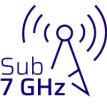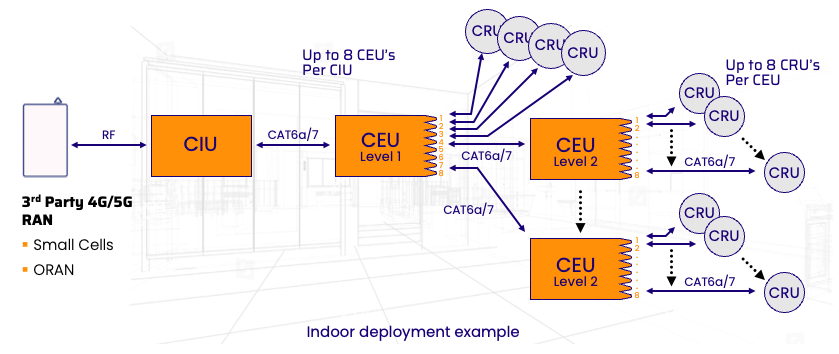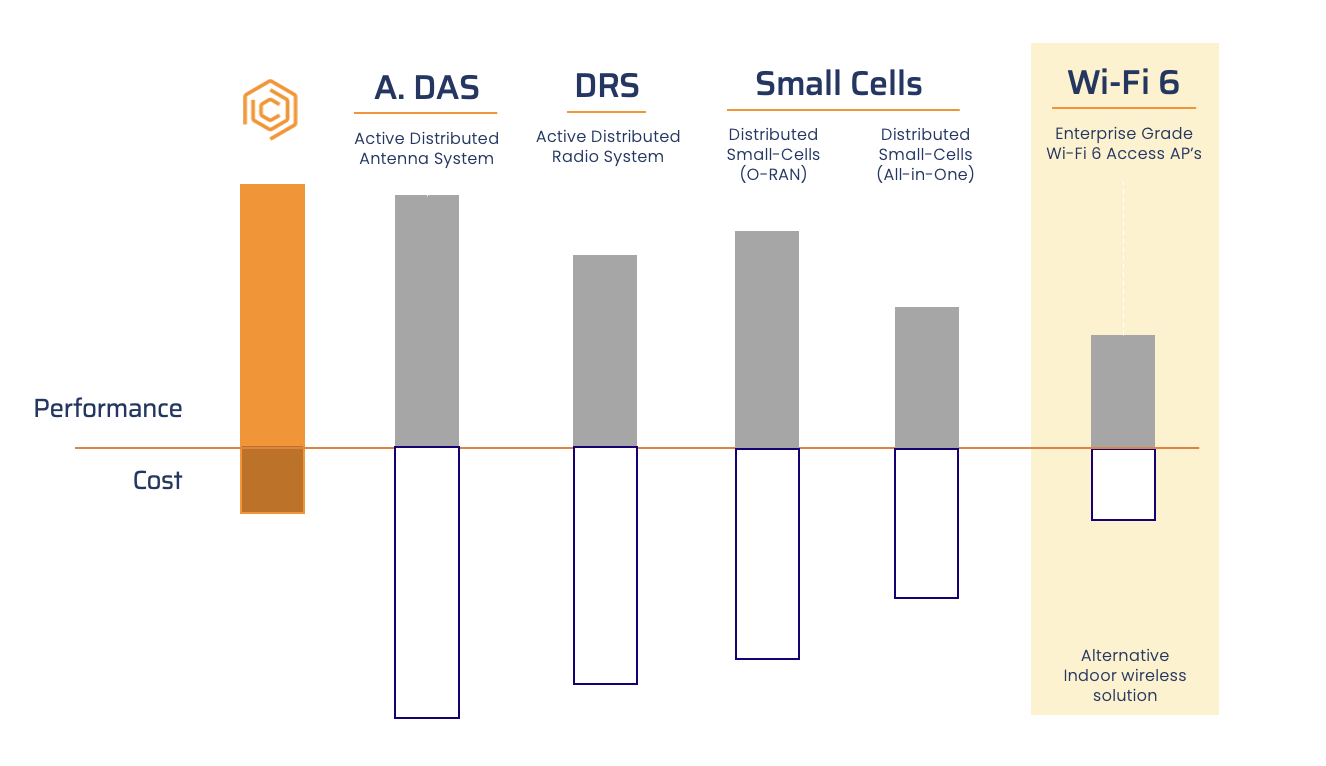

Cellium Technologies have developed a unique, cost-effective, approach to provide, high-performance, indoor 5G coverage that addresses all key pain-points associated with current indoor deployments.
Cellium’s EdgeAir antenna sub-system, integrated with Cellium’s intelligent SoC (System-on-a-Chip), is a revolutionary, technology agnostic, energy-efficient solution, compatible with all wireless technologies including LTE, 5G, Wi-Fi and IoT networks. It provides secure,‘zero-loss’, high-performance indoor coverage with significantly lower CapEX and OpEX compared to traditional in-building wireless technologies.





Cellium’s EdgeAir antenna sub-system connects to any 3rd party outdoor RAN equipment, in any Sub-7GHz frequency band (LTE, 5G, Wi-Fi and IoT) and re-transmits the original RF frequency throughout the indoor space via multiple Cellium Remote Units (CRU’s) providing in-building cellular coverage up to ~750,000 sq ft. (70,000 sq m).

The ‘magic’ of EdgeAir lies in the use of Cellium’s proprietary SoC (System on a Chip), by simply connecting EdgeAir to the external 3rd party RAN equipment via the antenna ports, it allows for the original Sub 7 GHz radio frequency to be down converted to intermediate frequency and distributed via the existing in-building coax cables (Cat 6, Cat 6A, Cat 7) to Cellium’s RU’s located throughout the building. The SoC in each of Cellium’s RU’s up-converts the IF frequency back to the original RF frequency to provide high-performance indoor coverage.
By using in-building ethernet copper cables, Cellium’s EdgeAir antenna sub-system is a cost-effective indoor wireless solution that provides coverage without any compromise in performance. Cellium’s EdgeAir, compared to traditional 5G in-building deployment technologies, offers significant savings in both CapEX and OpEx (up to 75%). By making the right indoor deployment choice, system integrators, enterprise owners and mobile network operators can offer their customers a high-performance in-building wireless solution without the associated high costs with traditional indoor deployment solutions.

Any Sub 7-GHz outdoor RF frequency can be redistributed indoors without the associated high cost, interoperability and performance issues that traditional in-building cellular solutions currently offer.
Cellium’s agnostic approach to indoor coverage can be used across all indoor vertical scenarios. Cellium’s EdgeAir family consists of a single or multi-tenant variant for MNO’s and a single-tenant variant for Private 5G that provides high-performance, capacity and coverage without compromising on performance.
Highly scalable, with the option to add additional CRU’s (up to 64) to provide high-performance coverage for any indoor environment up to ~750,000 sq ft (~70,000 sq m).

The Cellium Technologies team is looking forward to talking to you. Please reach out for more general information about our indoor solutions, an in-depth technical discussion or to arrange an in-person demo.
For more general inquires please write or send us an email.
• 26 Habarzel St. Tel Aviv 6971036, Israel